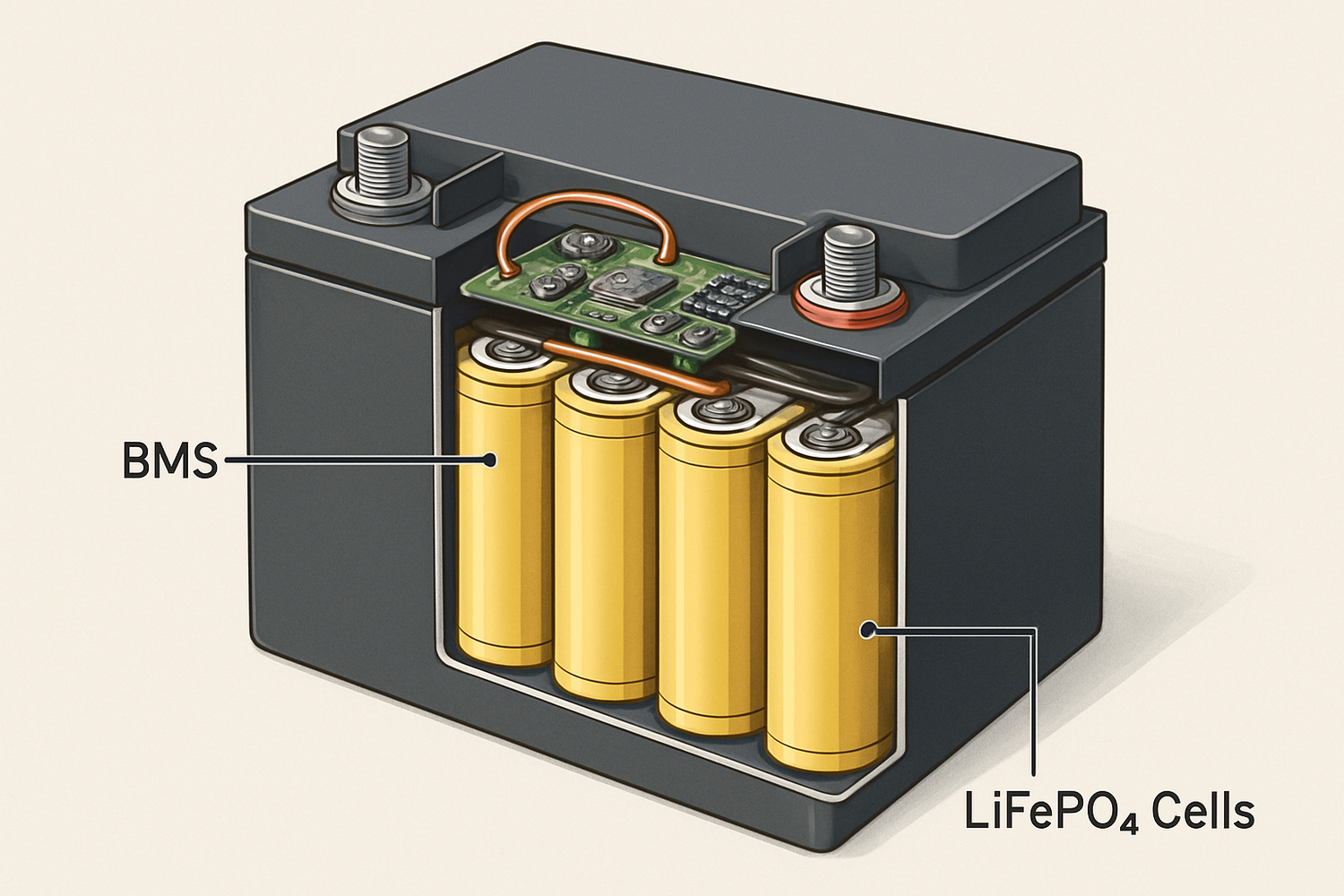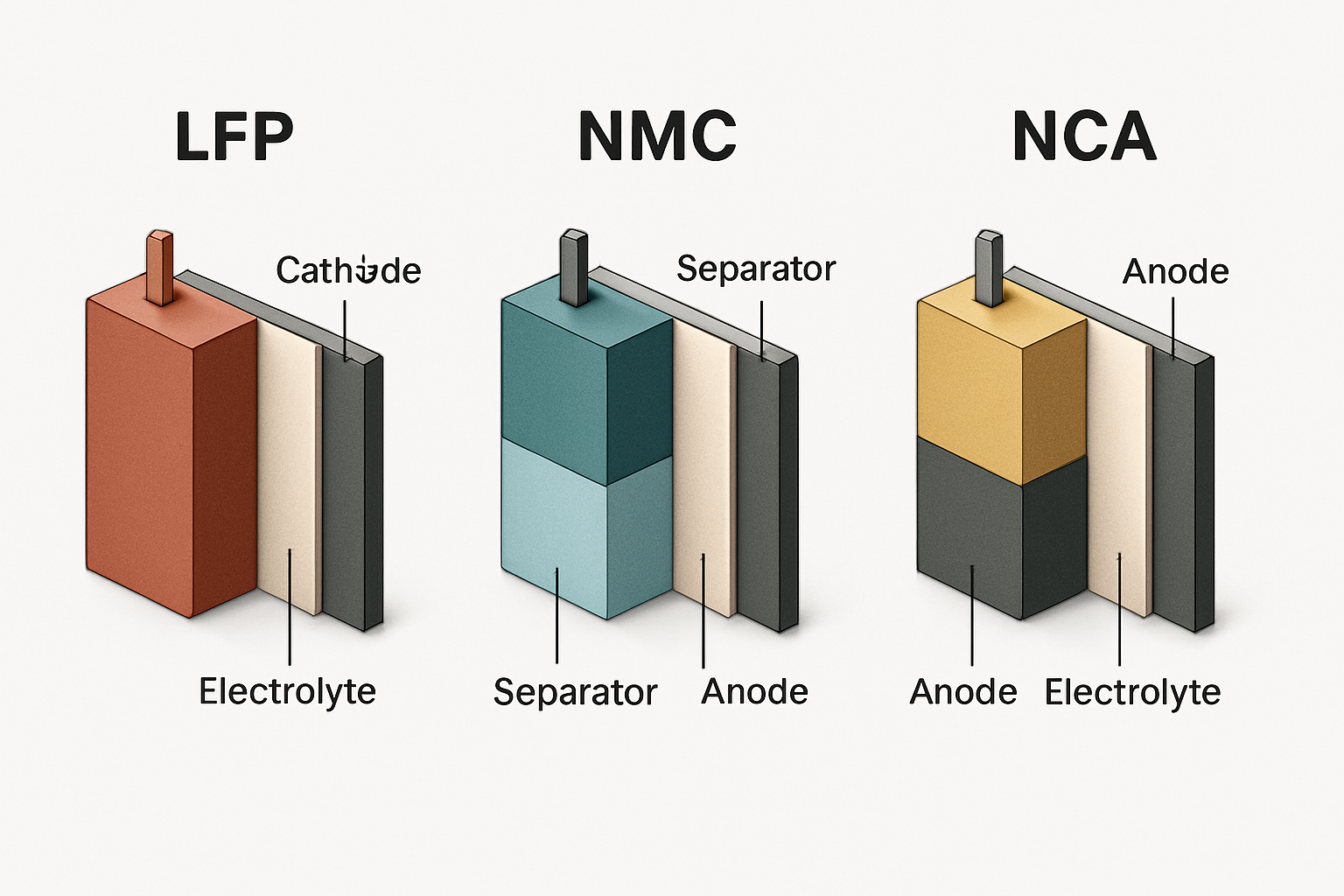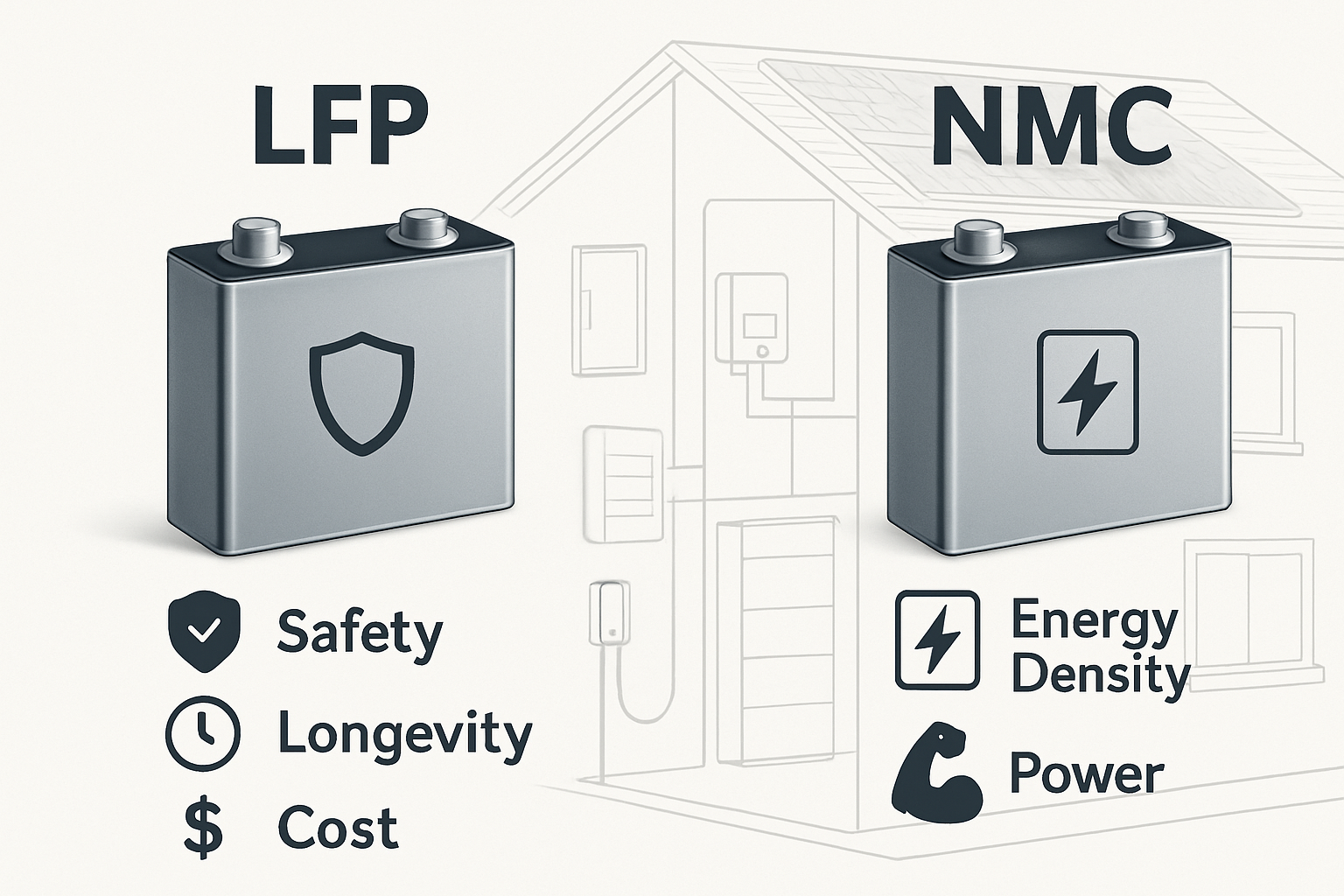Choosing the right deep cycle battery is a critical decision for anyone relying on stored energy, whether for a recreational vehicle, a marine application, or an off-grid solar system. Among the available technologies, the 12V LiFePO4 (Lithium Iron Phosphate) battery has become a leading choice due to its superior safety, longevity, and performance. This article provides a detailed framework for selecting the right LiFePO4 battery by examining its core chemistry, key performance metrics, and the essential components that ensure reliable operation.
Understanding the Core: What is a LiFePO4 Battery?
A LiFePO4 battery is a type of rechargeable lithium-ion battery that uses lithium iron phosphate as its cathode material. This specific chemistry is a key reason for its growing adoption in energy storage solutions. As noted in analysis by the International Energy Agency (IEA), different lithium-ion chemistries can be adapted for various applications, with LiFePO4's market share rising significantly in both electric vehicles and stationary storage.
The Chemistry Advantage: Safety and Stability
The primary advantage of LiFePO4 chemistry is its exceptional thermal and chemical stability. The phosphate-based cathode material is more stable than the oxide-based cathodes found in other lithium-ion variants like Nickel Manganese Cobalt (NMC) or Nickel Cobalt Aluminum Oxide (NCA). This inherent stability significantly reduces the risk of thermal runaway, making LiFePO4 batteries a safer option for demanding applications. They are less prone to overheating, even if punctured or short-circuited.
Longevity and Cycle Life
Cycle life refers to the number of complete charge and discharge cycles a battery can endure before its capacity diminishes to a specific percentage of its initial rating. LiFePO4 batteries are known for their impressive longevity, often delivering 2,000 to 5,000 cycles or more. In contrast, traditional deep-cycle lead-acid batteries typically offer only a few hundred cycles. This extended lifespan translates to a lower total cost of ownership, as the battery will not need to be replaced for many years.
Key Performance Metrics to Evaluate
When selecting a 12V LiFePO4 battery, it's important to look beyond the brand and focus on the technical specifications that define its performance. These metrics will determine if a battery is suitable for your specific energy demands.
Capacity (Ah) and Usable Energy (Wh)
Capacity, measured in Amp-hours (Ah), indicates how much current a battery can deliver over a specific period. Watt-hours (Wh) represents the total energy stored. To determine your needs, list all the devices you plan to power, their power consumption (in amps or watts), and the duration you expect to run them. This calculation will give you a baseline for the minimum capacity required for your system.
Depth of Discharge (DoD) and Its Impact
Depth of Discharge (DoD) is the percentage of the battery's capacity that has been used. LiFePO4 batteries can be safely discharged to 80-100% of their capacity without causing significant degradation. This is a major advantage over lead-acid batteries, which are typically limited to a 50% DoD to avoid permanent damage. Consequently, a 100Ah LiFePO4 battery provides nearly double the usable energy of a 100Ah lead-acid battery. For a deeper analysis of how these metrics translate to real-world solar storage setups, the ultimate reference for solar storage performance provides extensive data.
C-Rate: Charge and Discharge Speeds
The C-rate measures the speed at which a battery is charged or discharged relative to its capacity. A 1C rate means a 100Ah battery is being charged or discharged at 100 amps. LiFePO4 batteries support higher C-rates than lead-acid batteries, allowing for rapid charging and the ability to power high-draw appliances without a significant voltage drop.
The Critical Role of the Battery Management System (BMS)
A Battery Management System (BMS) is an electronic circuit that acts as the brain of the battery pack. Its role is non-negotiable for the safety, performance, and longevity of any lithium-ion battery. A quality BMS is a hallmark of a reliable 12V LiFePO4 battery.
What a BMS Does
The BMS continuously monitors and manages the battery's state. Its core functions include:
- Over-Voltage and Under-Voltage Protection: Prevents damage from overcharging or over-discharging.
- Over-Current Protection: Safeguards the battery from dangerously high currents during charge or discharge.
- Temperature Monitoring: Protects the cells from operating in extreme temperatures that could cause damage.
- Cell Balancing: Ensures all cells within the pack are at a similar state of charge, which maximizes usable capacity and extends the battery's life.
Why a Quality BMS is Non-Negotiable
A well-designed BMS is crucial for functional safety. It prevents conditions that could lead to cell damage or hazardous situations like thermal runaway. By maintaining the battery within its safe operating area, the BMS not only protects your investment but also ensures the dependable operation of your entire energy system.
Practical Considerations for Your Application
Beyond the core specifications, several practical factors will influence your battery selection. These considerations ensure the battery integrates seamlessly into your setup and performs reliably in its intended environment.
Physical Size and Weight
LiFePO4 batteries have a higher energy density than lead-acid batteries, meaning they store more energy in a smaller and lighter package. A LiFePO4 battery can be up to 50-70% lighter than a lead-acid battery of equivalent usable capacity, which is a significant advantage in mobile applications like RVs and boats where weight is a concern.
| Feature | 12V 100Ah LiFePO4 Battery | 12V 100Ah Lead-Acid Battery |
|---|---|---|
| Usable Capacity (at recommended DoD) | 80-100Ah | 50Ah |
| Cycle Life | 2,000 - 5,000+ cycles | 300 - 1,000 cycles |
| Weight | Approx. 24-28 lbs | Approx. 60-65 lbs |
| Maintenance | None required | Regular fluid checks (flooded types) |
Temperature Performance
LiFePO4 batteries perform well across a wide temperature range, typically from -20°C to 60°C for discharging. However, charging below freezing (0°C or 32°F) can damage the cells. For cold-weather applications, it is essential to select a battery with a BMS that includes low-temperature charging protection or an integrated heating element. While LiFePO4 outperforms lead-acid in the cold, it's a critical factor to consider for year-round use.
Series and Parallel Connections
If your system requires higher voltage (e.g., 24V or 48V) or more capacity, you may need to connect multiple batteries. Connecting in series increases voltage, while connecting in parallel increases capacity. Ensure the battery and its BMS are designed to support your desired configuration. It is always recommended to use identical batteries from the same manufacturer for multi-battery banks.
Making a Smart Investment
Selecting the right 12V LiFePO4 battery is about more than just meeting your immediate power needs. It's about investing in a long-term, reliable energy solution. By focusing on the fundamentals—stable chemistry, verifiable performance metrics, and a high-quality BMS—you can choose a battery that delivers lasting value. While the upfront cost may be higher than traditional options, the extended lifespan, superior usable energy, and maintenance-free operation make LiFePO4 a sound financial decision over time.
Disclaimer: This article is for informational purposes only and does not constitute professional engineering or financial advice. Always consult with a qualified professional before designing or installing an energy storage system.
Frequently Asked Questions
How long does a 12V LiFePO4 battery last?
A 12V LiFePO4 battery can last for 2,000 to 5,000 charge and discharge cycles. For an application that cycles the battery daily, this can translate to a lifespan of 10 years or more, which is significantly longer than the 2-5 year lifespan of most lead-acid batteries.
Can I use a regular charger for a LiFePO4 battery?
It is not recommended. LiFePO4 batteries require a charger with a specific charging profile designed for their chemistry. Using a charger intended for lead-acid batteries can fail to fully charge the battery or, in some cases, damage the cells and the BMS due to incorrect voltage and charging stages.
Are LiFePO4 batteries safe for indoor use?
Yes, LiFePO4 batteries are considered very safe for indoor use. Their stable chemistry prevents the release of flammable gases during charging, unlike flooded lead-acid batteries. This, combined with their reduced risk of thermal runaway, makes them an excellent choice for installation inside RVs, boats, and homes.





Leave a comment
All comments are moderated before being published.
This site is protected by hCaptcha and the hCaptcha Privacy Policy and Terms of Service apply.